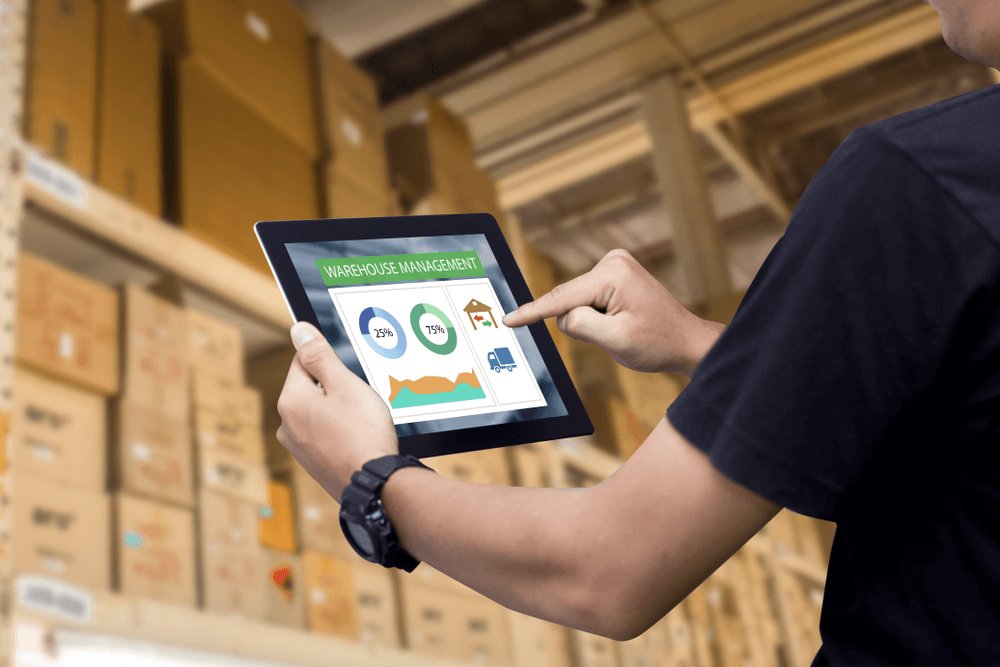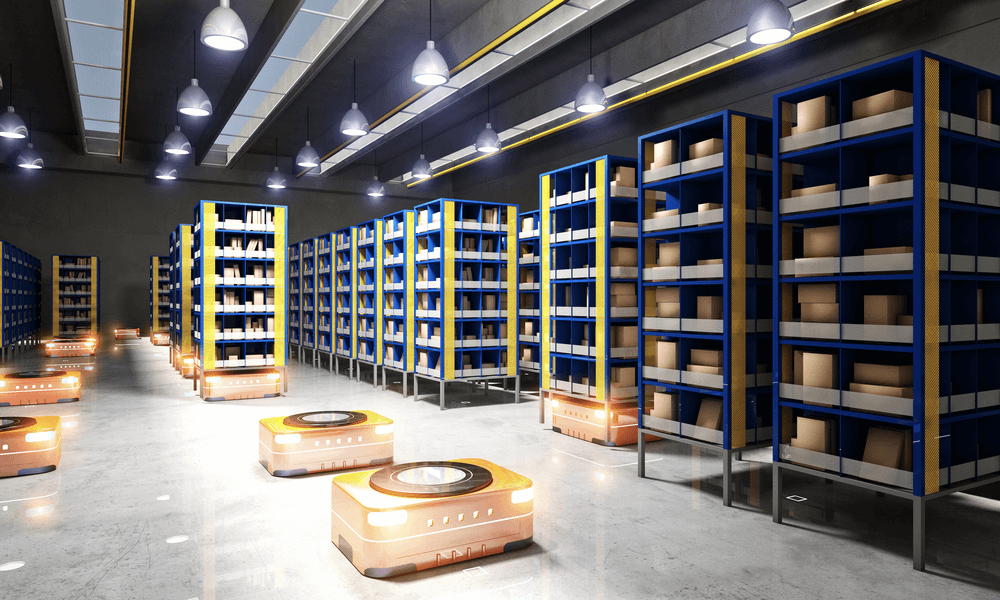
IBM watsonx for Enterprise Asset Management
IBM watsonx for Enterprise Asset Management: Leveraging AI to Boost Efficiency and Performance Enterprise Asset Management (EAM) is undergoing a significant transformation,
The COVID-19 pandemic has highlighted why warehouses must evolve to compete against rivals in a fast-changing competitive environment. While employees are the backbone of any manufacturing operation, it’s essential to use automation to assist them with a range of vital tasks.
An onsite manager can help plan the most effective warehouse organization system, but machines can make the most of an optimal layout to deliver better results at a lower cost. While there is an upfront investment when adapting your business model to use automation, the long-term benefits mean the new systems pay for themselves many times over.
When adding modern technology to your warehouse, there are several ways you can incorporate automation to maximize your current and future profitability.
Automation improves picking and handling processes, raises customer satisfaction levels and increases your company’s bottom line. However, without a carefully structured plan, you could find you are spending money on equipment you don’t need and compromising your current staff workflow.
While you can implement a strategy in-house, it may be worth considering working with a systems integrator. Experienced industry professionals can examine your systems, finding areas where automation can free up staff for other tasks.

By making tweaks in specific areas, you could make considerable cost savings. Automation is most successful for repetitive manual labor tasks, such as picking, packing and transporting goods around your facility. Working with heavy items or custom boxes can lead to workplace injury and increased sick leave costs, but machines eliminate this risk.
A systems integrator is familiar with the latest technology on the market. They can advise how different automated equipment and devices can work together, creating a new workflow system that can work 24/7. The pandemic has seen many businesses close their doors because staff could not work in a safe environment. A partially or fully automated warehouse ensures your business continues to operate even during a potential crisis that prohibits workers from entering the facility.

Whenever corporations mention automation in the workplace, the biggest fear among employees relates to job losses. If your staff members interpret your investment in automation as the first step to machines taking their place, they will be unlikely to work effectively with the new additions.
When employees are unsettled or fear for their jobs, the work environment suffers. Staff may even leave to look for other employment.
It’s essential to fully explain how automation can help them enjoy an improved working experience, completing jobs staff can find repetitive or boring. Provide training for your employees so they can advance in their positions to something more complex, such as maintaining equipment or planning projects.
Ensure employees have a straightforward method of communicating concerns to management and answer each question empathetically. Automation is increasingly improving the future of U.S manufacturing, and it’s vital to make employees feel part of the process, rather than fearing the fresh developments.
Before investing in automation software or machinery, evaluate your current systems. There is little benefit in purchasing packaging machines if your supplies are scattered haphazardly over the warehouse floor. Automation is most effective when there is a structured environment and the software can work in an organized fashion.
Talk to staff and look at your entire supply chain to find out where there are inefficiencies or where blockages occur. Discuss the best way to address issues that currently cost you time and money; then your operation can incorporate automation to supercharge your workflow.
The COVID-19 pandemic has changed the industrial landscape, with many businesses closing their doors or reducing operations and output significantly. By adopting automation, you can keep your company agile and ready to respond to future crises.
Many companies have found innovative solutions to supply chain issues during the COVID-19 pandemic. When current protocols and arrangements are in disarray, you need to know as much as possible about your supplies and deliveries to produce results for your customers.
You can receive a wealth of information instantly with an IoT-based data transmitting system using a UWB and RFID system in smart warehouse facilities that integrate into your current structures. While you can get this information from staff who manually check inventory, this takes longer and is prone to human error. A small mistake could mean you over- or underestimate stock levels, potentially losing the business money and customers. Because these systems connect to the internet, you don’t need to be onsite to know all the information you require to run your warehouse.
Post-COVID, you may be reconsidering your work processes and prefer to save time and money by working from home. You can even offer management staff the option to work part-time from home, making it a more attractive job proposition and increasing workplace satisfaction.
COVID-19 took the world by surprise, and it’s essential to plan for unexpected events in the future. Introducing automation to your warehouse can provide confidence your business can survive events that prevent employees from entering the workplace.
However, you also need to consider how you can add to your automated strategy in the months and years to come. If you can’t afford to completely automate your warehouse right now, you can take a modular approach. It’s possible to purchase one machine, wait until the profits allow you to add to your equipment, and then buy more at a later date.
Because technology is advancing rapidly, it’s important to purchase the equipment you can upgrade when the latest developments are available. Although the current booming industry is the supply of PPE kits and sanitizing items, new markets naturally develop over time. Ensure your automatic equipment can work with various materials and goods, allowing you to diversify your business and stay competitive.
There is the potential for significant financial benefits for warehouse facilities that invest in automation. While many businesses are finding current production conditions challenging, they could reap the benefits of purchasing automated equipment when planning for the future. The ability to operate 24/7 using machinery that only requires an inexpensive maintenance program could be a cost-effective strategy that pays for itself many times over.

Automation has been a hot topic for many years. The COVID-19 pandemic has brought into sharp focus how machinery and software could allow a warehouse to operate in an environment that may be unsafe for staff. While there is an upfront investment, you could find the long-term profitability is worth the initial cost.
We all hope to return to a new normal in the near future, but you may want to consider integrating automation into your warehouse sooner rather than later.
Browse Categories
Share Blog Post

IBM watsonx for Enterprise Asset Management: Leveraging AI to Boost Efficiency and Performance Enterprise Asset Management (EAM) is undergoing a significant transformation,

Building a Connected Enterprise for Ingram Content Group What Our Clients Say “The Pragma Edge team’s collaboration and expertise were key to

IBM Sterling for Modern B2B Integration, EDI, and Managed File Transfer: A Practitioner’s Guide Introduction B2B integration today is more than just
| Cookie | Duration | Description |
|---|---|---|
| cookielawinfo-checkbox-analytics | 11 months | This cookie is set by GDPR Cookie Consent plugin. The cookie is used to store the user consent for the cookies in the category "Analytics". |
| cookielawinfo-checkbox-functional | 11 months | The cookie is set by GDPR cookie consent to record the user consent for the cookies in the category "Functional". |
| cookielawinfo-checkbox-necessary | 11 months | This cookie is set by GDPR Cookie Consent plugin. The cookies is used to store the user consent for the cookies in the category "Necessary". |
| cookielawinfo-checkbox-others | 11 months | This cookie is set by GDPR Cookie Consent plugin. The cookie is used to store the user consent for the cookies in the category "Other. |
| cookielawinfo-checkbox-performance | 11 months | This cookie is set by GDPR Cookie Consent plugin. The cookie is used to store the user consent for the cookies in the category "Performance". |
| viewed_cookie_policy | 11 months | The cookie is set by the GDPR Cookie Consent plugin and is used to store whether or not user has consented to the use of cookies. It does not store any personal data. |
Thank you for submitting your details.
For more information, Download the PDF.
Thank you for registering for the conference ! Our team will confirm your registration shortly.
Invite and share the event with your colleagues
IBM Partner Engagement Manager Standard is the right solution
addressing the following business challenges
IBM Partner Engagement Manager Standard is the right solution
addressing the following business challenges
IBM Partner Engagement Manager Standard is the right solution
addressing the following business challenges